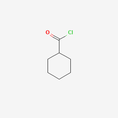1、 Health hazards
Invasion route: inhalation, ingestion and percutaneous absorption.
Health hazard: harmful to the body after inhalation, oral administration or skin absorption. Irritating to skin. Its vapor or fog can irritate eyes, skin, mucous membrane and respiratory tract. It can cause headache, nausea and vomiting after exposure.
2、 Toxicological data and environmental behavior
Acute toxicity: LD506279mg/kg (rat oral); 5878mg/kg (rabbit percutaneous); Inhalation, 2130mg/m3, eye and nose irritation; Inhalation of 851mg/m3 will not cause lung and kidney damage.
Subacute and chronic toxicity: rats inhalation, 3404mg/m3 × 7 hours/day × On the 30th day, he died, with pathological changes in lung, kidney and liver.
Hazard characteristics: flammable, with the risk of causing combustion in case of high heat, open fire. When encountering water, it can gradually hydrolyze and release irritating gas.
Combustion (decomposition) products: carbon monoxide, carbon dioxide, silicon oxide.
3. On site emergency monitoring method:
4. Laboratory monitoring methods:
Determination of content in air: the sample is adsorbed by tree wax, eluted by carbon disulfide, and then analyzed by gas chromatography (NIOSH method)
5. Environmental standards:
United States (1974) Occupational Safety and Health Administration standard air: time weighted average value 100ppm
Olfactory threshold concentration




